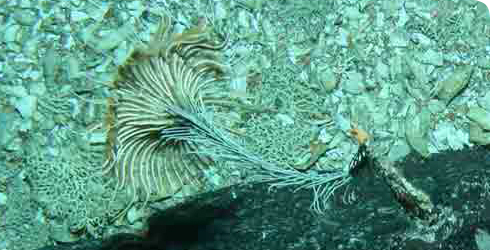Reproduction and lifecycle
Reproduction
Metacrinus rotundus occurs as both male and female individuals.
Sperm from males is released into the water (spawning) and stimulates the eggs, held on the pinnules at the end of the arms of the female individuals. Eggs are produced in large numbers and are fertilised almost immediately after release.
Lifecycle
Once the eggs are released from the parent and are fertilised, the resultant embryo attaches to a solid surface. This could be the arms of the parent crinoid.
Once affixed, the embryo develops and after several days releases a free-swimming, barrel-shaped planktonic larva called a doliolaria. After a further week, these larvae become fixed and develop a stem, mouth, and 5 podia (arm-like structures). This stage is called the cystidean stage.
After several weeks the crinoid reaches the stalked, sessile pentacrinoid stage, where it forms true arms, pinnules, a complete thecae and stem.
Over the next few months, the animal continues to grow by adding new plates to the stem and arms so that the individual can reach a higher position in the water column.
In most cases, the following year the animal is fertile and produces either sperm or eggs.
Cyclicity
Most crinoids breed once per year during the spring when both eggs and sperm are released into the water column. Such episodes can coincide with mass spawning events. This means that the reproductive cycle can be synchronous with neighbouring individuals and may be influenced by external water conditions.
